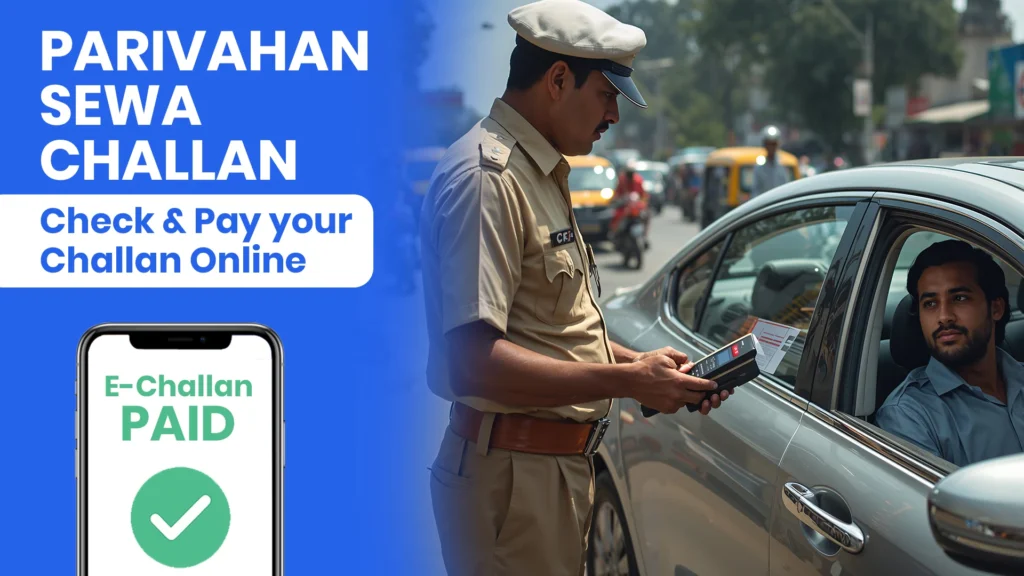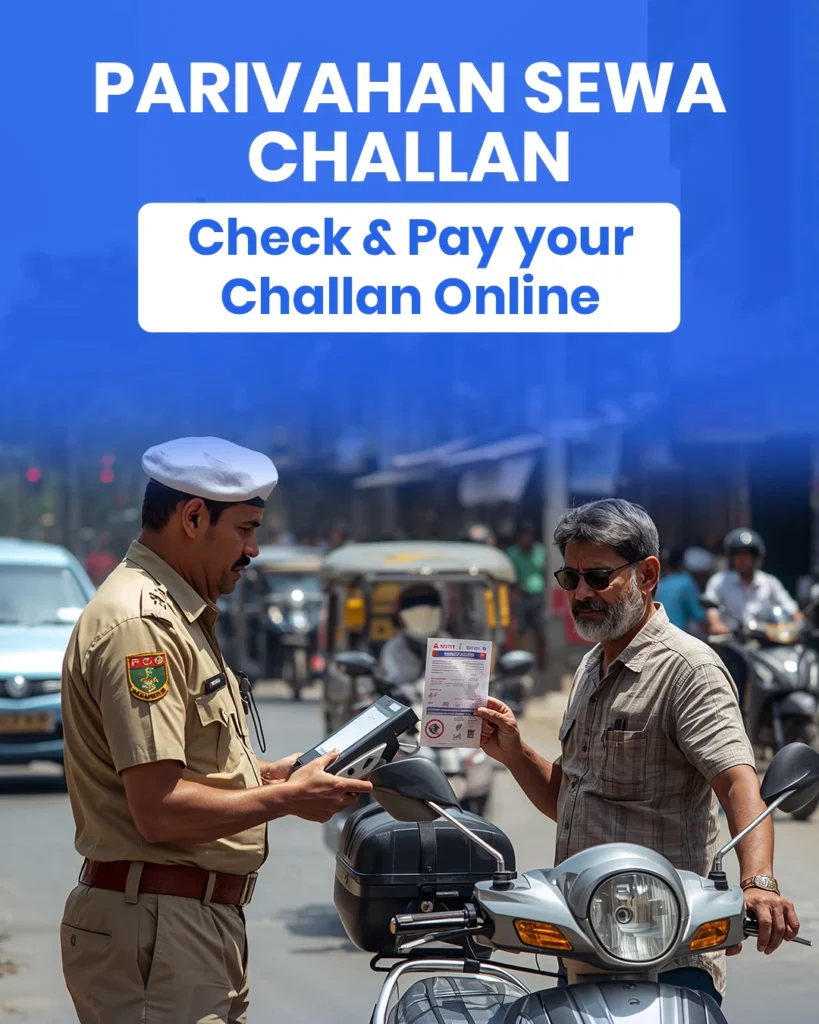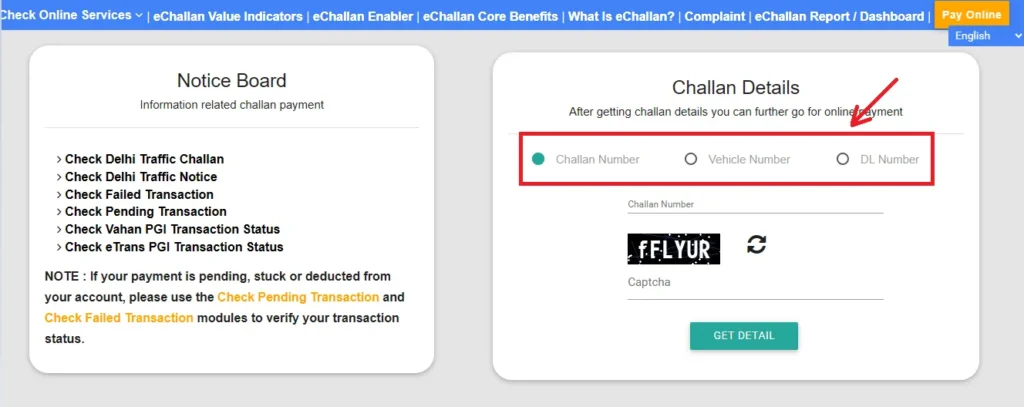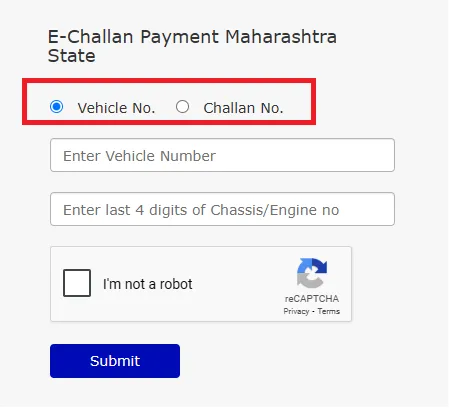
Rohit was rushing to an important job interview when a traffic camera flashed, and a notice soon landed in his inbox. Two days later, a small but alarming entry appeared under his name: a Parivahan Sewa challan for a red-light violation one that cost him more than just time.
If you’ve ever felt a jolt of panic upon seeing “e-challan pending” in your notifications, you’re not alone. This guide breaks down everything about Parivahan Sewa challan from checking and paying fines to contesting errors and avoiding future tickets. It’s designed for everyday drivers across India to stay compliant and stress-free.

What Is a Parivahan Sewa Challan?
Parivahan Sewa challan is the digital traffic fine record generated and managed through the government’s Parivahan e-challan infrastructure. The Parivahan e-challan portal lets citizens check pending fines using challan number, vehicle number, or driving license number and pay online securely through the official system.
Tip: Parivahan challan is fully digital no need to visit traffic police stations.
Why E-Challans Matter
The shift from paper challans to digital Parivahan sewa challan systems has made enforcement faster, reduced disputes, and allowed real-time tracking of violations. For motorists the benefit is clarity you can see the offense details, the amount, and payment status immediately without visiting the RTO or police station. Timely payment also avoids escalation and administrative action.
How E-Challans are Generated
Most e-challans are created by two methods: manual booking by traffic police on the Parivahan/Sarathi systems or automated detection via camera-based systems (ANPR, speed and red-light cameras) linked to state ITMS platforms.
When a violation is recorded, the data (vehicle number, time, location, offense code) is matched against VAHAN and SARATHI databases and a digital notice is issued to the vehicle owner. This process is increasingly common in smart city installations and highway ITMS projects.
Most e-challans are generated via traffic cameras and ANPR systems. SMS alerts are sent if your mobile is linked with VAHAN.
How to Check Your Parivahan Sewa Challan: Step-by-Step
- Visit the official e-challan portal: echallan.parivahan.gov.in (or open the Parivahan mobile app).
- Choose “Check Challan Status” or “Get Challan Details.”
- Enter one of the accepted identifiers: Challan Number, Vehicle Number (or Chassis/Engine), or Driving License number.
- Type the captcha shown and click “Get Details.”
- View the offense details, fine amount, date, and the issuing authority. If a payment link is available you can proceed to pay online.

Use challan number, DL number, or vehicle number to check status.
Ways to Pay an E-Challan
Parivahan Sewa challan payments can usually be completed online via the portal’s payment gateway. Common options include net banking, debit/credit card, UPI, and mobile wallets depending on the state’s integration.
After successful payment you will receive a transaction ID keep this for records, and check “Check Pending Transaction” if the payment does not reflect immediately.
Quick Tip: Pay via UPI, cards, or net banking for quick settlement.
State-Level Portals and Integrations
Several states run their own e-challan portals that integrate with the central Parivahan system. For example, Maharashtra offers a state e-challan payment gateway where you can submit vehicle number and Parivahan Sewa challan details directly.
These local portals may provide extra services like linking/unlinking mobile numbers, grievance redressal, and SMS notifications. If you don’t find your Parivahan Sewa challan on the central site, check your state police/RTO portal.
Important Point: Some states like Delhi and Maharashtra have separate portals.
Contesting a Challan: What If It’s Wrong?
If the Parivahan Sewa challan looks incorrect wrong vehicle, mistaken time, or duplicate entry you have options:
Document everything, note the challan number, and keep copies of any communications.
Consequences of Not Paying
Unpaid e-challans can escalate. In many states unpaid fines may be forwarded to virtual traffic courts for hearing, and prolonged default can lead to administrative action against your driving license (DL) or vehicle registration (RC).
New government proposals are also pushing for a stricter compliance window draft rules suggest a 45-day compliance period after which access to DL/RC services could be blocked unless the Parivahan Sewa challan is paid or contested.
Non-payment may lead to escalation in Virtual Traffic Courts.
Common Offense Types and Fine Ranges
These fine amounts are based on the Motor Vehicles (Amendment) Act, 2019, but states may revise or impose higher penalties depending on local rules.
Tips to Avoid Receiving a Challan
A driving licence is your legal permit to drive and proof of identity visit Parivahan Sewa Driving Licence to learn more.
How to Contest a Parivahan Sewa Challan Practical Steps
- Collect evidence: ownership documents, photos, dashcam logs, parking receipts, or toll records.
- Raise an online grievance: use the state portal or the Parivahan grievance option if available.
- If required, file a representation in the local RTO or traffic police office and schedule a hearing.
- Attend virtual or in-person hearings armed with evidence and copies of the challan and transaction details.
- If the administrative route fails, consider legal remedies contact a transport lawyer who handles challan disputes.
Real-Life Success Stories
These real scenarios are common and emphasise why it’s important to monitor your vehicle history on the Parivahan portals regularly.
Dealing with Repeated or Duplicate Entries
Raise a dispute online with screenshots and receipts. Keep copies of all challan numbers for quick reference.
What Happens After Non-Payment
If you ignore a Parivahan Sewa challan, the issue may escalate from a simple fine to administrative blocks on services. Some systems forward unpaid fines to Virtual Traffic Courts or administrative channels.
In practice this can delay processing of DL renewals or RC services, and in extreme cases additional penalties could be applied as per state rules. A proactive approach pay or contest within the given window is usually cheaper and faster.
How to Link Mobile Number and Get Alerts
Some state portals and VAHAN integrations let you link a mobile number to your vehicle so the owner receives SMS alerts when a challan is issued. This reduces delays in noticing an offense and makes payment or dispute easier.
Check your state e-challan page (for example, Maharashtra’s portal has a link to link/unlink mobile numbers) and follow their instructions to register your mobile.
Safety, Privacy, and Fraud Awareness
Never click on payment links received on SMS or WhatsApp.
When to Pay vs. Contest
If evidence is weak and you can prove your innocence (e.g., camera read error, vehicle was sold, or the vehicle was not at the location), contest instead of immediately paying; paying may be interpreted as admission of guilt in some administrative processes. If the evidence is clear such as a photo of your vehicle committing an offense it may be simpler to pay and move on after ensuring that the amount is correct and no duplicate fees were added.
Quick Troubleshooting for Payment Issues
Linking payments & checking transaction status
If you paid but the challan still shows pending, use the “Check Pending Transaction” and “Check Failed Transaction” options on the e-challan portal. Keep transaction IDs and bank receipts ready these help the authority reconcile the payment quickly and clear the record if acceptable.
Useful Resources and Official Links

Practical Final Tips
Keep insurance, PUC, and license updated to avoid fines.
FAQs on Parivahan Sewa Challan
Why Timely Payment of Parivahan Sewa Challan Matters
A month after ignoring a small traffic notice, Meera was surprised when her RC renewal was delayed. The reason? An unpaid Parivahan Sewa challan that had been sitting unnoticed in the system. What seemed like a minor fine had now turned into a bigger problem, blocking her essential vehicle service. This is a situation many vehicle owners in India face a small lapse today can lead to unnecessary stress, delays, and even higher costs later.
Timely payment of your challans is not just about avoiding penalties it’s about keeping your driving record clean, ensuring smooth access to services like DL/RC renewal, and avoiding legal complications. Every unpaid Parivahan sewa challan remains linked with your vehicle and licence, which means it can resurface at the most inconvenient times.
Ignoring a challan may feel insignificant in the moment, but it can quickly snowball into unnecessary complications. From delayed renewals to unexpected fines, even travel disruptions if you’re stopped at a traffic check, the consequences can be frustrating. By staying proactive with the Parivahan Sewa portal, you not only fulfill a legal duty but also ensure a smoother, stress-free driving experience. Remember, responsible drivers don’t just follow rules on the road they also manage their records off it.
By clearing Parivahan Sewa Challans on time, you
In short, paying your Parivahan Sewa challan within the deadline is a simple step with big benefits. It protects your time, money, and peace of mind while ensuring you remain on the right side of the law. A quick check today can save you time, stress, and money tomorrow.
